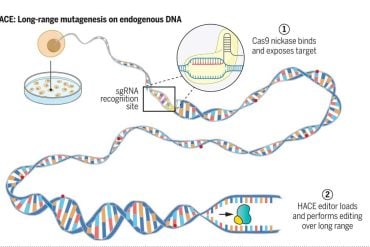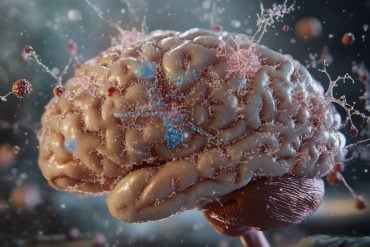Summary: Study shows chronic hyperglycemia impairs working memory performance and alters fundamental aspects of working memory brain networks. The findings strengthen the link between type 2 diabetes and Alzheimer’s disease.
Source: University of Nevada
A team of UNLV neuroscientists has strengthened the link between Type II diabetes and Alzheimer’s disease.
In a study published in the September issue of the journal Communications Biology, researchers show that chronic hyperglycemia impairs working memory performance and alters fundamental aspects of working memory networks.
“Diabetes is a major risk factor for developing Alzheimer’s disease, but it is not clear why,” says James Hyman, study author and associate professor of psychology at UNLV. “We show that a central feature of diabetes, hyperglycemia, impairs neural activity in ways that are similar to what is observed in preclinical Alzheimer’s disease models. This is the first evidence showing neural activity changes due to hyperglycemia overlap with what is observed in Alzheimer’s systems.”
The research project is the continuation of a six-year collaboration between Hyman and coauthor Jefferson Kinney, chair and professor in UNLV’s Department of Brain Health, to better understand why diabetes can elevate risk for Alzheimer’s. The work is funded by a grant from the National Institute on Aging.
“As the number of Alzheimer’s disease diagnoses rapidly rises and the incidence of diabetes and pre-diabetes has accelerated, it’s crucial that we understand what connects these two disorders,” Kinney said.
The researchers found that two parts of the brain that are central to forming and retrieving memories — the hippocampus and the anterior cingulate cortex — were over-connected, or hypersynchronized. When it came time to remember the correct information and complete a task, these two parts of the brain – which are affected early in Alzheimer’s progression – were over-communicating with each other, sparking errors.

“We know synchrony is important for different parts of the brain to work together. But, we’re finding more and more these days, that the key with neural synchrony is it has to happen at the right time, and it has to happen with control,” Hyman said. “Sometimes, there’s just too much ‘talking’ between certain areas and we think this leads to memory difficulties, among other things.”
Hyman compares the situation to a CEO who hands over a majority of the company’s business operations to their son, who then decides to upend previous communication structures and become the sole gatekeeper of information.
“The only communication the CEO has is with one person, as opposed to talking with all of the other people in the office,” Hyman said. “It is possible that in Alzheimer’s patients there’s over-connection in certain areas where there should be flexibility. And in the models in our study, we’re seeing evidence of that in real-time at these crucial moments to do the task.”
This most recent finding not only provides novel information about brain activity in the hyperglycemia model, it also provides an additional important measure that can be used for continuing research.
“Our next step is to combine the biochemical markers and electrophysiology data to test specific mechanisms responsible and potential treatments,” said Kinney. “This research will now be able to work towards understanding the risk as well as what may be able to be done to help.”
About this neurology research news
Author: Natalie Bruzda
Source: UNLV
Contact: Natalie Bruzda – UNLV
Image: The image is in the public domain
Original Research: Open access.
“Altered theta rhythm and hippocampal-cortical interactions underlie working memory deficits in a hyperglycemia risk factor model of Alzheimer’s disease” by Ryan. A. Wirt, Lauren. A. Crew, Andrew. A. Ortiz, Adam. M. McNeela, Emmanuel Flores, Jefferson. W. Kinney & James M. Hyman. Communications Biology
Abstract
Altered theta rhythm and hippocampal-cortical interactions underlie working memory deficits in a hyperglycemia risk factor model of Alzheimer’s disease
Diabetes mellitus is a metabolic disease associated with dysregulated glucose and insulin levels and an increased risk of developing Alzheimer’s disease (AD) later in life. It is thought that chronic hyperglycemia leads to neuroinflammation and tau hyperphosphorylation in the hippocampus leading to cognitive decline, but effects on hippocampal network activity are unknown.
A sustained hyperglycemic state was induced in otherwise healthy animals and subjects were then tested on a spatial delayed alternation task while recording from the hippocampus and anterior cingulate cortex (ACC). Hyperglycemic animals performed worse on long delay trials and had multiple electrophysiological differences throughout the task.
We found increased delta power and decreased theta power in the hippocampus, which led to altered theta/delta ratios at the end of the delay period. Cross frequency coupling was significantly higher in multiple bands and delay period hippocampus-ACC theta coherence was elevated, revealing hypersynchrony. The highest coherence values appeared long delays on error trials for STZ animals, the opposite of what was observed in controls, where lower delay period coherence was associated with errors.
Consistent with previous investigations, we found increases in phosphorylated tau in STZ animals’ hippocampus and cortex, which might account for the observed oscillatory and cognitive changes.






